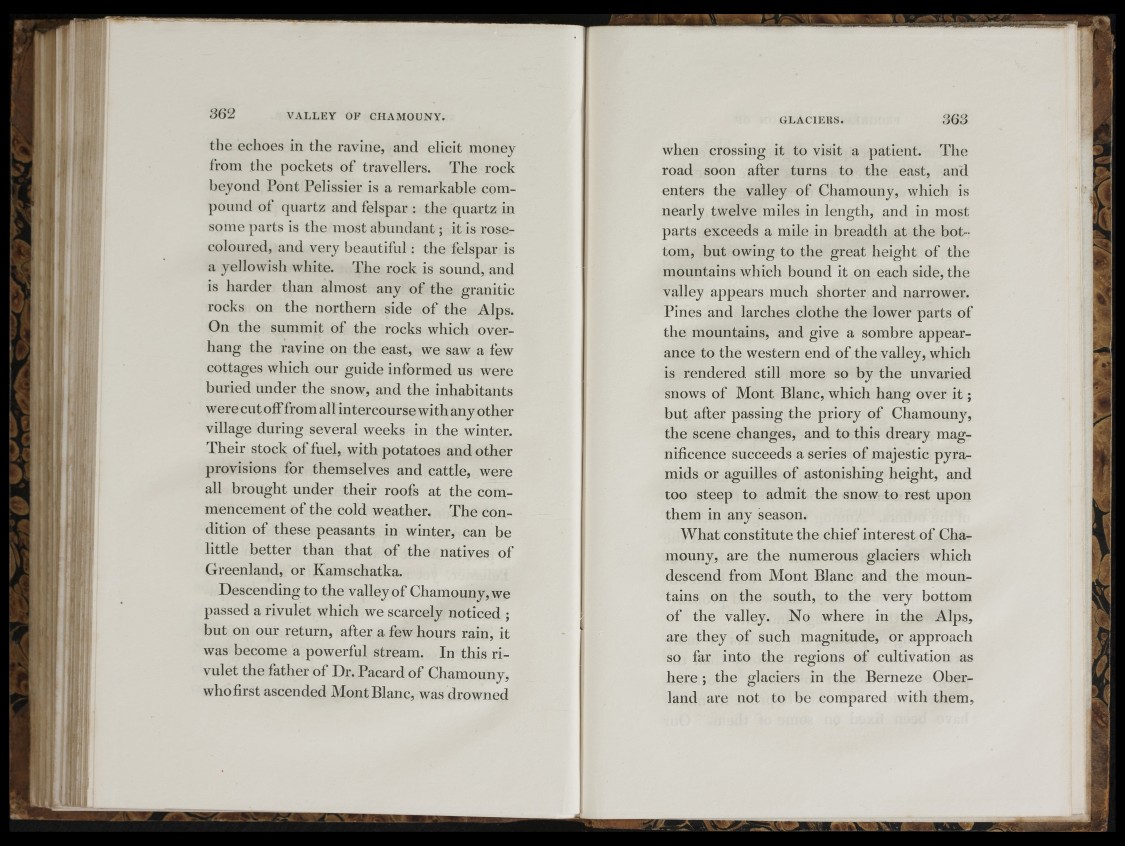
V A L L E Y OP C H A M O U N Y .
the echoes in the ravine, and elicit money
from the pockets of travellers. The rock
beyond Pont Pelissier is a remarkable compound
of quartz and felspar : the quartz in
some parts is the most abundant; it is rose-
coloured, and very beautiful: the felspar is
a yellowish white. The rock is sound, arid
is harder than almost any of the granitic
rocks on the northern side of the Alps.
On the summit of the rocks which overhang
the ravine on the east, we saw a few
cottages which our guide informed us were
buried under the snow, and the inhabitants
w ere cut off from all intercourse with any other
village during several weeks in the winter.
Their stock of fuel, with potatoes and other
provisions for themselves and cattle, were
all brought under their roofs at the commencement
of the cold weather. The condition
of these peasants in winter, can be
little better than that of the natives of
Greenland, or Kamschatka.
Descending to the valley of Chamouny, we
passed a rivulet which we scarcely noticed ;
but on our return, after a few hours rain, it
was become a powerful stream. In this rivulet
the father of Dr. Pacard of Chamouny,
who first ascended Mont Blanc, was drowned
( ■ -I,I
G L A C I E R S . 363
when crossing it to visit a patient. The
road soon after turns to the east, and
enters the valley of Chamouny, which is
nearly twelve miles in length, and in most
parts exceeds a mile in breadth at the bottom,
but owing to the great height of the
mountains which bound it on each side, the
valley appears much shorter and narrower.
Pines and larches clothe the lower parts of
the mountains, and give a sombre appearance
to the western end of the valley, which
is rendered still more so by the unvaried
snows of Mont Blanc, which hang over i t ;
but after passing the priory of Chamouny,
the scene changes, and to this dreary magnificence
succeeds a series of majestic pyramids
or aguilles of astonishing height, and
too steep to admit the snow to rest upon
them in any season.
What constitute the chief interest of Chamouny,
are the numerous glaciers which
descend from Mont Blanc and the mountains
on the south, to the very bottom
of the valley. No where in the Alps,
are they of such magnitude, or approach
so far into the regions of cultivation as
h e re ; the glaciers in the Berneze Ober-
land are not to be compared with them.
I j
k: